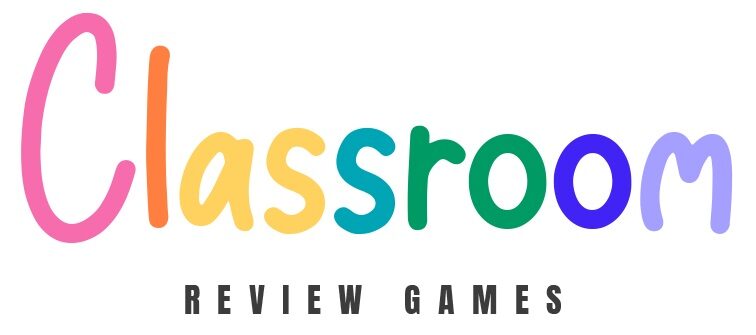Transform Your Classroom With These Engaging PowerPoint Games Students Actually Love
Transform your classroom into a dynamic learning hub with interactive games that spark curiosity and drive engagement. Today’s students thrive on interaction, and implementing engaging classroom reviews through games can boost participation by up to 90%. From digital quiz battles to team-based challenges, these interactive elements turn routine lessons into memorable learning experiences.
Picture this: students eagerly participating, learning actively, and retaining information better – all while having fun. Interactive classroom games achieve this perfect balance, combining educational content with engaging mechanics that keep students focused and motivated. Whether you’re tech-savvy or just starting with digital tools, these games adapt to your teaching style and classroom needs.
The best part? You don’t need complex technology or extensive prep time. With simple PowerPoint templates and basic digital tools, you can create customizable games that align perfectly with your curriculum objectives. Get ready to revolutionize your teaching approach with game-based learning that actually works.
Why Interactive PowerPoint Games Work So Well in the Classroom
The Science Behind Game-Based Learning
Research shows that game-based learning triggers the release of dopamine in our brains, making learning more enjoyable and memorable. When students are engaged in educational games, they’re not just having fun – they’re activating multiple areas of their brains simultaneously, which enhances retention and understanding.
Studies have found that interactive games can improve student engagement by up to 67% compared to traditional teaching methods. This boost in engagement leads to better focus, increased participation, and higher test scores. Games also create a low-stakes environment where students feel safe to make mistakes and learn from them.
What’s particularly exciting is how games naturally promote social-emotional learning. Through classroom games, students develop crucial skills like teamwork, communication, and healthy competition. They also learn to handle success and failure gracefully, building resilience that extends beyond the classroom.
Moreover, games provide instant feedback, allowing students to adjust their understanding in real-time – a key factor in effective learning.
Student Engagement Meets Learning Objectives
The magic of interactive classroom games lies in their ability to strike the perfect balance between entertainment and education. When students are genuinely enjoying themselves through team-based learning activities, they’re more likely to retain information and actively participate in the learning process. The key is to align game mechanics with specific learning objectives – for example, using point systems that reward accurate answers rather than just quick responses.
Consider incorporating multiple-choice questions that require critical thinking, or challenge rounds that build upon previous lessons. By connecting game elements to curriculum goals, you create an environment where students don’t even realize they’re learning because they’re so engaged in the competition. This approach also allows for immediate feedback, helping students understand concepts in real-time while maintaining their enthusiasm and motivation to participate.


Setting Up Your First Interactive Classroom Game
Choosing the Right Game Template
Selecting the perfect game template for your classroom starts with understanding your learning objectives and students’ needs. For younger grades (K-3), opt for simple matching games, picture-based quizzes, and colorful sorting activities that maintain engagement while building fundamental skills. Upper elementary and middle school students thrive with word scrambles, trivia challenges, and team-based competitions.
When teaching math, consider templates that allow for quick number calculations or problem-solving sequences. Science lessons work well with categorization games and interactive diagrams, while language arts benefits from word association and storytelling templates. Social studies comes alive with timeline-based games and geography challenges.
Match your game’s complexity to your students’ technological comfort level. Start simple and gradually introduce more complex features as they become familiar with the format. Remember to choose templates that are easily customizable – you’ll want to update content throughout the year while keeping the engaging game structure intact.
Pro tip: Test your chosen template with a small group first to ensure it runs smoothly and achieves your teaching goals before using it with the entire class.
Customization Tips That Save Time
Save precious planning time with these quick customization tricks! Start by creating a master template with your most-used elements like score tracking and timer displays. Use the “Save As” feature to make multiple versions without starting from scratch. For text-heavy games, keep a document with frequently used questions and answers that you can quickly copy and paste. Color-code different subject areas or difficulty levels for easy identification.
Pro tip: Create placeholder boxes with clear labels like [INSERT VOCABULARY WORD] or [ADD MATH PROBLEM] to make content updates super quick. Store your media files in organized folders by subject or unit for fast access. Remember to save your customized games with descriptive names including the subject and grade level.
For maximum efficiency, team up with fellow teachers to share and swap modified templates. This collaborative approach helps build a diverse game library while reducing individual prep time.
Technical Setup Made Simple
Getting started with classroom games is easier than you might think! All you need is a computer with PowerPoint (or similar presentation software), a projector or interactive whiteboard, and an internet connection. Most classrooms already have these basics covered.
First, make sure your computer’s display settings match your projector’s resolution for the best visual experience. Position your screen where all students can see it clearly. If you’re using sound elements, test your speakers beforehand.
For student participation, you have flexible options. Students can respond using individual mini-whiteboards, colored cards, or even simple hand signals. Want to go digital? Free tools like Plickers or student response systems work great if you have tablets or smartphones available.
Remember to save your game files in a easily accessible folder, and always keep a backup copy. Consider creating a simple scoreboard template to track points and maintain engagement throughout the game.
Making Games Work for Every Subject
Math and Science Game Ideas
Transform your math and science lessons into exciting learning adventures with these engaging game ideas! Start with interactive math games like “Number Ninja,” where students solve equations to advance through levels, or “Fraction Factory,” which turns fraction operations into a fun production line challenge.
For science concepts, try “Element Explorer,” where students match chemical elements with their properties in a memory-game format. “Lab Safety Showdown” gets students competing to identify proper safety procedures through multiple-choice questions and engaging scenarios.
Make geometry exciting with “Shape Quest,” asking students to spot and classify shapes in real-world photos. For biology, “Cell Structure Scramble” helps students piece together organelles while racing against the clock.
Want to review multiplication tables? Create a “Times Table Race” where teams compete to solve problems fastest. For physics, “Force and Motion Matchup” lets students predict object movements under different conditions.
These games work great as whole-class activities or in small groups. Remember to keep rounds short (5-10 minutes) and celebrate both speed and accuracy. Mix competitive and collaborative elements to maintain engagement, and don’t forget to include fun sound effects or simple animations when possible!

Language Arts and Social Studies Applications
Language Arts comes alive with interactive games that boost vocabulary, reading comprehension, and writing skills. Try a “Word Detective” game where students compete to identify parts of speech in sentences displayed on screen, earning points for correct answers. Create an engaging “Story Elements Showdown” where teams race to identify characters, plot points, and settings from popular literature.
For Social Studies, transform historical events into interactive timeline challenges. Students can click on events to arrange them chronologically, making history more memorable and fun. Design a “Geography Explorer” game where students identify countries, capitals, or landmarks on interactive maps, with bonus points for sharing cultural facts.
Get creative with “Biography Bingo” – display clues about historical figures while students mark their cards. For grammar practice, set up “Punctuation Pursuit” where teams compete to correctly punctuate sentences, with animated celebrations for successful answers.
These games work especially well for review sessions and can be adapted for different grade levels. Add sound effects, colorful graphics, and timer elements to increase excitement. Remember to include opportunities for discussion and reflection after each game to reinforce learning objectives. You can also let students create their own questions for future games, encouraging deeper engagement with the material.
Troubleshooting Common Challenges
Even the best-planned classroom games can hit a few snags, but don’t worry! Here are simple solutions to common challenges you might face when running interactive games in your classroom.
If students seem disengaged, try mixing up team compositions or adding surprise bonus points for creative answers. When some students dominate while others hang back, implement a “round-robin” rule where each team member must participate before anyone can go twice.
Technical hiccups getting you down? Keep a backup plan ready – printable versions of your digital games or alternative activities that don’t require technology. For slow internet days, download game materials in advance and save them offline.
Managing noise levels? Establish clear signal systems, like a raised hand for attention or a special sound effect. Use timer apps to keep activities moving and create natural breaks in the excitement.
Dealing with competitive behavior? Focus on improvement rather than winning by tracking class-wide progress toward shared goals. Consider awarding points for good sportsmanship and teamwork, not just correct answers.
If the game feels too easy or difficult, have modifier cards ready that can quickly adjust the challenge level. Keep a few “wild card” questions in your pocket to either simplify or increase complexity on the fly.
Remember, the first run of any game might not be perfect – use student feedback to refine and improve for next time!
Interactive classroom games are a powerful tool that can transform your teaching experience and boost student engagement. By incorporating these dynamic activities into your lessons, you’ll create an environment where learning feels less like work and more like play. Remember, you don’t need to be a tech expert to get started – begin with simple games and gradually expand your repertoire as your confidence grows. The key is to stay flexible, listen to student feedback, and adapt games to fit your classroom’s unique needs. Whether you’re teaching math, language arts, or science, there’s an interactive game format waiting to energize your lessons. Start small, have fun, and watch as your students become more engaged, motivated learners through the power of interactive gameplay!


